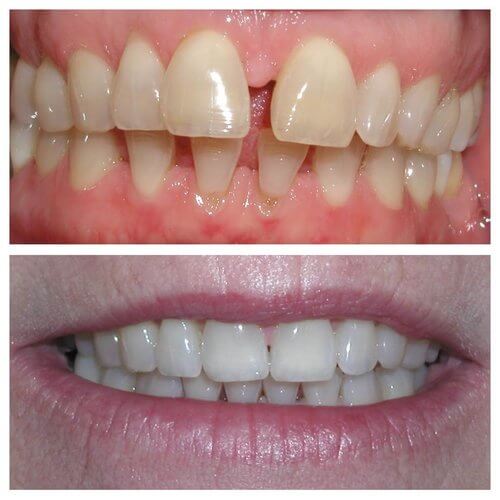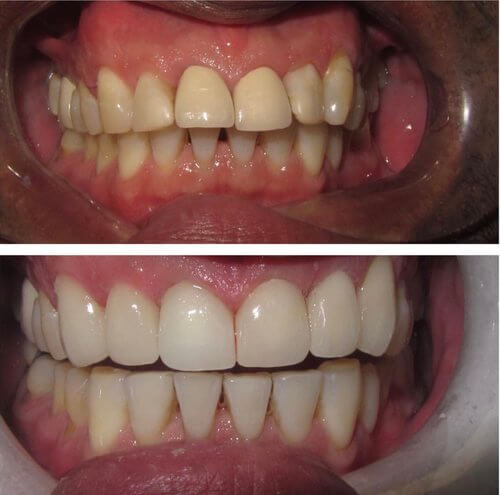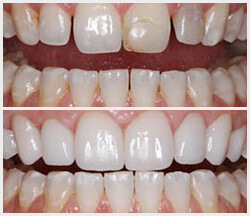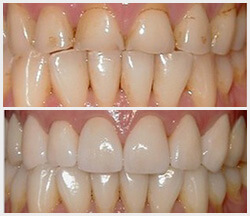Your Guide to Pulpotomy Treatment
Pulpotomy is a word that may sound intimidating to parents whose children need dental treatment. This procedure treats decay in baby teeth and prevents further damage. Pulpotomy is an endodontic treatment that focuses on preserving the healthy part of a tooth’s pulp and removing the infected portion.
Discover more about this pediatric procedure with our dentists in Staten Island, NY.
What Is a Pulpotomy?
A pulpotomy is a dental procedure that removes infected pulp tissue from a child’s tooth while preserving as much of the healthy pulp as possible. The pulp is the soft tissue inside a tooth that contains blood vessels, nerves, and connective tissue. This is a more conservative alternative to pediatric root canal therapy.
Pulpotomy procedures may also be performed on permanent teeth in specific cases where the pulp is damaged but the root structure is still healthy enough to support the tooth. However, root canal treatment is typically the preferred option for treating pulp-related issues in permanent teeth.
When Is a Pulpotomy Necessary?
A pulpotomy is usually necessary when a baby’s tooth is affected by tooth decay that has progressed to the point where it has caused pulpitis. Pulpitis is inflammation of the pulp tissue and can cause pain, sensitivity to temperature, and difficulty eating. If left untreated, pulpitis can lead to the spread of infection to the roots of the tooth, which can cause an abscess, swelling, and pain.
Benefits of Pulpotomy
Pulpotomy has several benefits for children’s dental health, including:
- Tooth Preservation: By removing the infected pulp tissue and preserving the healthy pulp, a pulpotomy can save a tooth from extraction. Baby teeth are essential for maintaining space for permanent teeth and aiding in speech and chewing.
- Pain Relief: Pulpitis can cause significant pain and discomfort in children. A pulpotomy can alleviate the pain by removing the source of inflammation and infection.
- Prevention of Infection: A pulpotomy can prevent the spread of infection to the tooth roots, which can lead to an abscess and swelling.
- Cost-Effective: Pulpotomy is a less expensive alternative to tooth extraction and can save parents money in the long run.
The Pulpotomy Process
Numbing the Area
The dentist will first numb the area around the affected tooth with a local anesthetic to ensure your child won’t feel any pain during the procedure.
Isolating the Tooth
They’ll isolate the tooth with a rubber dam to keep it dry and free of saliva and other contaminants.
Removing Damaged Tissue
They’ll then remove the decayed or damaged tissue from the pulp chamber of the tooth using special dental instruments.
Applying Medication
Next, the dentist will apply medication to the remaining healthy pulp tissue to help it heal and prevent further decay or infection.
Placing a Restoration
The dentist will fill the pulp chamber with a dental restoration material, usually a stainless steel crown, to protect the tooth and provide structural support.
Removing the Rubber Dam and Aftercare Instructions
Finally, they’ll remove the rubber dam and explain to the child and parent what to expect after the procedure.
Pulpotomy Aftercare
After a pulpotomy, follow the dentist’s instructions for proper aftercare to ensure that the tooth heals and remains healthy. Here are some tips for pulpotomy aftercare:
- Pain Management: Give your child over-the-counter pain relievers that are safe for children as directed by their dentist, and contact the dentist if the pain persists or is severe.
- Oral Hygiene: Encourage your child to brush their teeth at least twice a day and floss once a day to prevent further decay or infection.
- Eating Habits: Avoid giving your child hot or crunchy foods until the numbness from the local anesthetic has worn off completely. Soft foods are easier to eat and less likely to irritate the tooth.
- Follow-up Appointments: Attend all follow-up appointments as scheduled to ensure that the tooth is healing correctly and that the dental restoration material is still in place.
- Prescribed Medications: Ensure your child takes any prescribed medication or mouthwash as directed by their dentist.
Frequently Asked Questions
How long does a pulpotomy take?
A pulpotomy typically takes about 30 to 60 minutes to complete. This depends on the extent of the decay and the child’s cooperation during the procedure. Your dentist will provide a treatment timeline at your initial consultation.
Is a pulpotomy the same as a root canal treatment?
A pulpotomy is similar to a root canal treatment but is typically performed on baby teeth. In a root canal treatment, the entire pulp chamber and root canal system of the tooth is removed and filled with dental restoration material. In a pulpotomy, only the infected pulp tissue is removed, and the remaining healthy pulp is left in place.
Do you need a crown after a pulpotomy?
Yes. It’s recommended to place a dental restoration material, usually a stainless steel crown, after a pulpotomy to protect the tooth and provide structural support. The crown is placed over the remaining tooth structure and is cemented in place. The dental crown will also help prevent future decay or infection in the tooth.
Get Your Child’s Health Back on Track With a Safe Pulpotomy
By removing the infected pulp tissue and preserving the healthy pulp, a pulpotomy can help maintain the child’s oral health and development. If your child is experiencing pain or sensitivity in their baby teeth, seek dental care promptly to determine if a pulpotomy is necessary.
Call our Staten Island dental office at (718) 948-5111 to schedule a consultation today.



Insurance
We accept many insurances. Please contact one of our Insurance Coordinators to discuss your dental coverage plan.
(718) 948 5111
appointments@sidental.com
Open 7 days a week
Reviews
The dentists are absolutely excellent…
“I have been going here for years. The dentists are absolutely excellent and they always have an appointment available that fits into a busy schedule. I also completed invisilgn and my teeth are perfectly straight now. They also practice preventive medicine and just went in for my 6 month cleaning. Every time feel like I have a new set of choppers and best yet the check up noted no cavities!.”
— J.R
Pleasant visit
“As usual, it was a pleasant visit thanks to Dr. Nasso and her great staff..”
— C.M.
Always treated with courtesy and respect.
“Always treated with courtesy and respect. All of my questions were answered regarding upcoming treatments..”
— J.C.
Smile Profile




Put your best face forward.
Create a positive change to your teeth and your smile.
